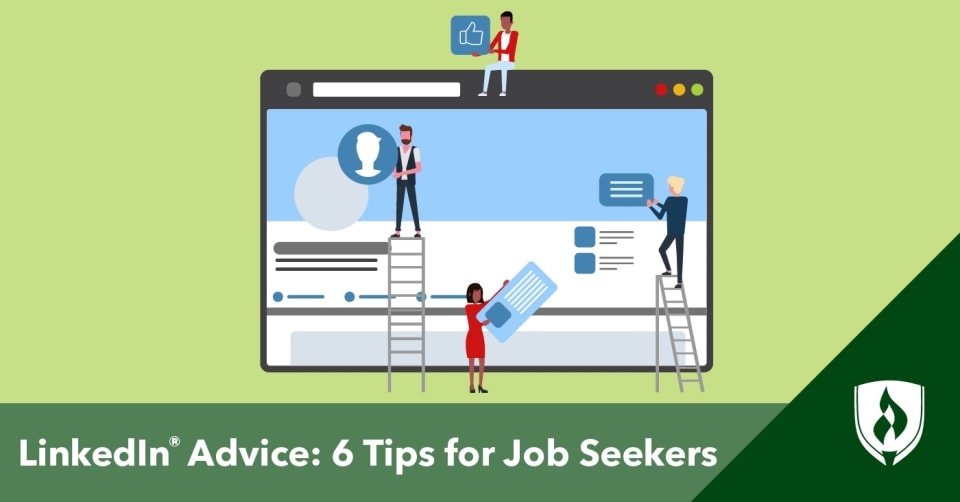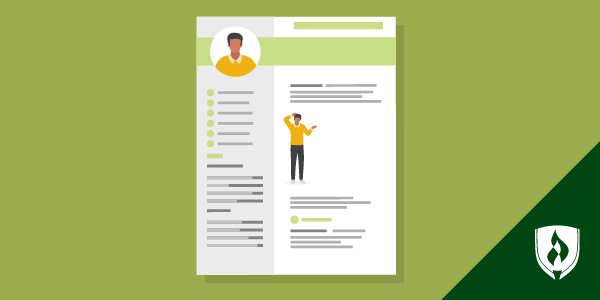
As you’re launching your career, you’ve probably been told to either create or update your LinkedIn profile page. When reviewing a candidate, one of the first things many employers do is check the person’s LinkedIn profile. And with all your professional experience there with a photo to put a face to the name, it’s no wonder.
However, this has created another hoop for job seekers to jump through, and with so many moving parts, LinkedIn can seem like an easy place to just create a profile, add a photo and summary, then call it done. But with employer eyes watching, it’s safe to say that having a professional and polished LinkedIn isn’t an area to slack on.
Revamping your LinkedIn is nothing to panic about, though. From making sure your profile picture is professional to best strategies on the platform, we’ve got six LinkedIn profile tips to help you land your next big job.
6 LinkedIn tips for job seekers looking to stand out
1. Choose a professional headshot
A picture is worth a thousand words, as the expression goes. In this case, it’s a thousand words about you.
Stephanie Daniels, senior career services advisor at Rasmussen University, advises that your LinkedIn profile picture should be a professional photo with you smiling. What does professional mean here? While there is some leeway for what’s appropriate—not every headshot needs to feature you in your most formal attire—Daniels says it’s safe to steer clear from featuring vacation or party photos.
Additionally, don’t use photos with multiple people in them. As much as you and your friends hang out, including them in your LinkedIn photo can make it ambiguous as to who you are. Are you the smiling blonde in the front or the tall one in the back?
This doesn’t mean you need to book an appointment with a professional photographer, either. A solid background without distractions, a nice professional outfit and a helpful friend with a decent phone camera are all you’ll need—aside from your smiling face, of course.
2. Complete your profile
While it can be tempting to call it “good enough” once you add a picture and a few details of your past jobs to your profile, Daniels says that filling out all sections of your profile (and keeping it up to date) is crucial to getting your profile noticed.
She recommends tagging organizations on your profile—like where you work and went to school or places you’ve volunteered—and following the LinkedIn guidelines for creating a profile. All these steps will optimize your profile for search engines, which can help improve your visibility to recruiters and employers.
Daniels also advises people to include a minimum of five skills from their work experience on their profile in the skills section and to endorse colleagues’ skills. “Skills cannot be endorsed unless they are present in a profile,” she says. “These skills are valuable when a potential future employer is reviewing your LinkedIn account because they validate your skills and strengths.”
While it’s important to fill out all the profile sections, you do not need to overshare. Instead, focus on providing relevant information for employers, not an overwhelming amount. “Your profile does not need a wealth of information,” says Daniels. “Simple yet complete is good.”
3. Engage with content and stay active
“Focus on building quality not quantity of your connections,” says Daniels. Rather than connecting and then forgetting about that connection, engage with what the person posts. Congratulate them on promotions, like the career advice they share or read and comment on their blog posts.
Maintaining your network—even when not actively job searching—is an ongoing effort. Plus, if you put yourself in their shoes, you’d probably appreciate a congrats on the job switch or a like on your updates.
Later, when you’re looking for that new job or need some career help, you don’t have to revive old network connections. Instead, you can reach out to somebody you’ve stayed in touch with on LinkedIn.
“If you have an account but are not active, you might as well not have an account at all,” says Daniels.
4. Post your own content
LinkedIn isn’t just for looking at other people’s promotions. When you graduate, get a new job or earn a certification, post about it. If you have some thoughts on industry news, you can share them.
Daniels suggests that even simply sharing an inspirational quote is a great way to build your LinkedIn. “Just remember that your activities are viewable so keep it professional, respectful and civil,” she says.
5. Have a purpose behind your profile
When you’re using LinkedIn, Daniels recommends having a goal. “The purpose of LinkedIn is to build your brand, grow your career and promote yourself as if you are a small business,” she says.
Keeping your overall purpose in mind as you use LinkedIn can give some direction as you’re updating your profile or posting. Think about what skills potential employers want, follow companies you’d want to work for and create an introduction that focuses on your professional experience and career goals.
Just like choosing how to design your resume, how you use LinkedIn helps create a personal brand. If you’ve kept your personal brand in mind as employers look at your LinkedIn, your profile can stand out and create a more unified picture of all your application materials for a job.
6. Play the long game
“The most common mistake I see people make with their LinkedIn accounts is that professionals do not do the research to understand how to leverage the website for their own career,” says Daniels.
She explains that using LinkedIn only when job seeking will not immediately find you a job. “The website is best used for growing your career as you would your small business,” she says. “Do the research and learn how to best utilize for your benefit with higher success rates.”
Reading a bit on LinkedIn best practices or talking with a career services advisor if you are a student or alum are great ways to learn how to get the best results using LinkedIn.
Take the next career steps
With these six tips in hand, you’ll know how to make a great LinkedIn profile that passes the test of even the pickiest employer. The key to LinkedIn is remembering that it’s not one and done: You have to stay active and keep your profile up to date. Plus, engaging with other people’s content and even posting some of your own are great ways to maintain your network.
Once you’ve got your LinkedIn profile optimized and you land that job interview, your next step will be acing the interview. As you prepare for your interview and practice for the expected questions, don’t forget about those tricky questions that nobody could have predicted. Before you’re stumped on the spot, read our article “7 Strategies for Handling Challenging Interview Questions” to prepare for even the hardest questions.
LinkedIn is a registered trademark of LinkedIn, Inc.




